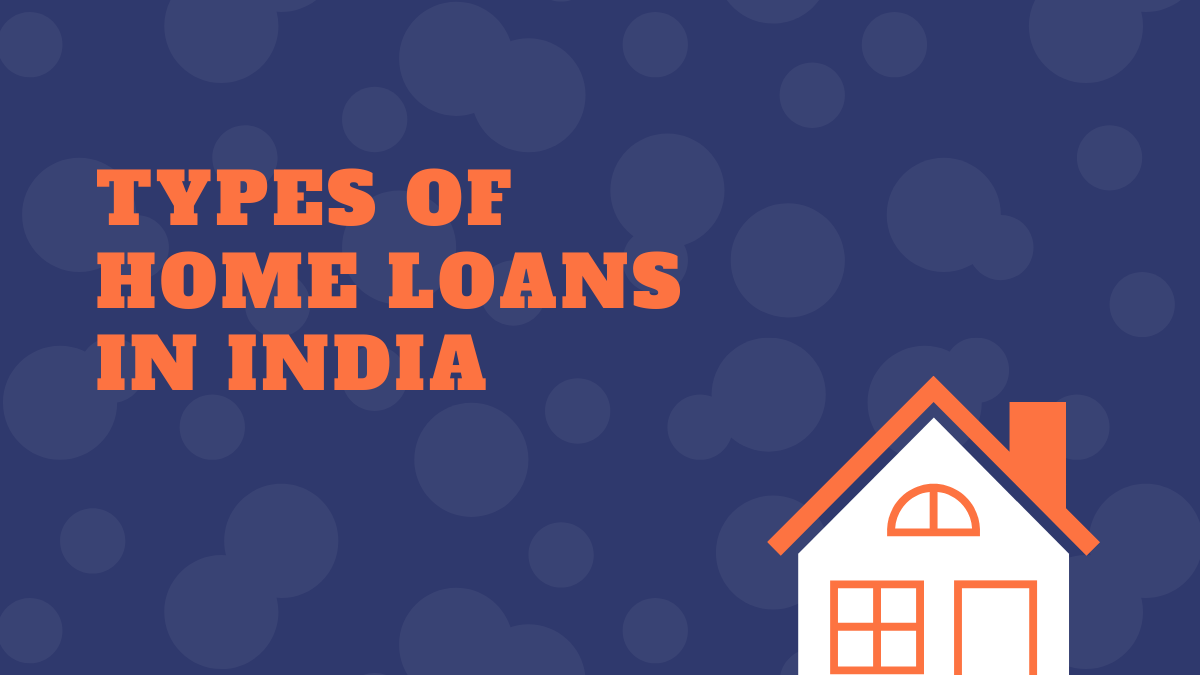Table of Content
- Types of Home Loans Based on Interest Rates
- Eligibility Criteria for Home Loans in India
- Evaluating Repayment Capacity
- Interest Rates and Loan Tenure
- Additional Charges
- Home Loan Application Process
- Tax Benefits
- Legal Rights of the Lender
- 5 Important Terms About Home Loans in India
- Types of Home Loans Based on Purpose
A home loan is a secured loan used to purchase a property, with the property itself serving as collateral. These loans provide high-value funding at affordable interest rates and are typically repaid over long periods through EMIs (Equated Monthly Installments). Once the loan is fully repaid, the property's title is transferred back to the borrower.
Banks, financial institutions, and Non-Banking Financial Companies (NBFCs) in India offer home loans to help individuals buy residential properties. The popularity of home loans has grown significantly due to rising property prices and increased demand for affordable housing.
Home loans are a long-term financial commitment, so it's essential to carefully consider your options before deciding. In India, there are various types of home loans available, including fixed-rate home loans, floating-rate home loans, and hybrid home loans.
Types of Home Loans Based on Interest Rates
Fixed-Rate Home Loan A fixed-rate home loan is one where the interest rate remains constant throughout the loan tenure. This type of loan is ideal for those who prefer stability and want to avoid fluctuations in interest rates. It ensures a consistent repayment amount, making financial planning easier.
Floating-Rate Home Loan A floating-rate home loan has an interest rate that varies with market conditions. This loan type is suited for those willing to accept the risk of interest rate changes in exchange for the potential benefit of lower rates.
Hybrid Home Loan Hybrid home loans combine fixed and floating interest rates. The interest rate is fixed for an initial period and then shifts to a floating rate for the remaining tenure. This option is good for those who want stability at the beginning and are open to changes later on.
Eligibility Criteria for Home Loans in India
Eligibility criteria for home loans in India vary by lender but commonly include age, income, credit score, employment history, and property value. Generally, borrowers must be at least 21 years old with a stable income source.
Evaluating Repayment Capacity
Before applying for a home loan, assess your repayment capacity and determine a manageable loan amount. Many lenders provide online calculators to help you estimate your loan eligibility and EMI payments.
Interest Rates and Loan Tenure
Interest rates for home loans in India typically range from 6.65% to 9%, depending on the lender, loan amount, and tenure. Loan tenures range from 5 to 30 years. Longer tenures result in lower EMIs but higher overall interest payments. Choose a tenure that aligns with your financial goals and repayment ability.
Additional Charges
Home loans in India may include processing fees, prepayment charges, and foreclosure charges. Processing fees cover the cost of loan application processing. Prepayment charges apply if you repay the loan early, while foreclosure charges apply if you settle the loan before the end of the tenure.
Home Loan Application Process
Availing a home loan involves several steps, including applying for the loan, submitting necessary documents, and getting loan approval.
Tax Benefits
The Indian government offers various tax benefits on home loans, including deductions on the principal amount repaid, interest paid, and stamp duty and registration charges. These benefits can significantly reduce the overall cost of the loan.
Also Read: 7 Best Home Loan Apps in India
Legal Rights of the Lender
If the borrower fails to repay the loan, the lender has the legal right to recover the outstanding amount by selling the property.
By understanding these aspects, you can make informed decisions about home loans and choose the best option for your needs.
5 Important Terms About Home Loans in India
Understanding the key terms related to home loans can help you make better financial decisions. Here are five essential terms you should know:
- Equated Monthly Instalment (EMI): EMI is the fixed monthly payment that a borrower makes to repay their home loan. It includes both the principal amount and the interest, spread over the loan tenure. While the EMI amount remains constant throughout the repayment period, the portions of interest and principal change over time.
- Loan-to-Value (LTV) Ratio: The LTV ratio is the percentage of a property's value that can be financed through a home loan. It represents the proportion of the loan amount a lender is willing to provide relative to the property's appraised value. This ratio varies based on factors like the borrower's creditworthiness, the property type, and the loan amount.
- Fixed Interest Rate: A fixed interest rate remains constant throughout the loan tenure, offering borrowers certainty about their monthly repayment amounts. This stability means the interest rate won't fluctuate with market conditions. However, fixed-rate home loans often come with higher interest rates compared to floating-rate loans.
- Prepayment: Prepayment is the option to repay a home loan partially or fully before the scheduled tenure ends. Borrowers can make prepayments to reduce the outstanding principal, which helps save on interest costs and can shorten the loan tenure. Note that some lenders may impose prepayment charges or penalties, so it's important to review the terms and conditions.
- Credit Score: A credit score is a numerical representation of a borrower's creditworthiness, calculated based on factors like repayment history, credit utilization, length of credit history, and types of credit accounts. Lenders use credit scores to assess eligibility for a home loan and determine the interest rate. A higher credit score indicates lower credit risk and can improve the chances of getting favorable loan terms.
These terms are crucial for navigating home loans in India, and understanding them can help you make informed choices about your home loan options.
Also Read: How To Reduce Home Loan Interest Rate In 2024?
Types of Home Loans Based on Purpose
Here are the various types of home loans available based on their specific purposes:
- Home Purchase Loan: This loan is taken to buy a new home. It provides the necessary funds to purchase a residential property.
- Home Improvement Loan: This loan is taken to repair or renovate an existing home. It covers expenses related to home improvement projects.
- Home Construction Loan: This loan is taken to build a new house. It provides the funds needed for constructing a home from scratch.
- Land Purchase Loan: This loan is taken to buy a plot of land. The borrower can use this loan to purchase land for constructing their own house in the future.
- Home Extension Loan: This loan is taken to expand an existing home. It covers costs for adding another floor, room, garage, bathroom, kitchen, or any other extension.
- Joint Home Loan: This loan is taken by two or more people, such as spouses. It allows multiple borrowers to share the loan amount and repayment responsibilities.
- Home Loan Balance Transfer: This loan allows you to switch lenders and transfer your outstanding loan amount to benefit from better terms and conditions, such as lower interest rates.
- Top-Up Home Loan: This loan allows you to borrow additional funds over and above your outstanding loan amount at nominal interest rates. The funds can be used for any purpose, providing extra financial flexibility.
Understanding these different types of home loans can help you choose the one that best suits your specific needs and financial goals.
Also Read: Learn how to improve your CIBIL score for Home Loan



_1758715186.webp)







Ans 1. Loans can be broadly categorised into secured and unsecured loans based on whether they require collateral or not. Secured loans require collateral whereas unsecured loans do not. Each of these two categories has a list of loan products listed with each product serving a specific purpose.
Ans 2. Different Types of Home Loans in IndiaA Standard Home Loan. The Standard or Basic Home Loan is the most common type of House Loan. ...A Home Construction Loan. ...Land or Plot Loan. ...Home Improvement and Extension Loan. ...Top-Up Home Loan. ...Pre-Approved Home Loan. ...PMAY Loan. ...Balance Transfer Home Loan.
Ans 3. Conventional mortgagesConventional mortgages are the most common type of mortgage. That said, conventional loans may have different requirements for a borrower's minimum credit score and debt-to-income ratio (DTI) than other loan options.
Ans 4. Your monthly mortgage payment typically has four parts: loan principal, loan interest, taxes, and insurance. Making one payment to cover all four parts means you only have to remember one due date.